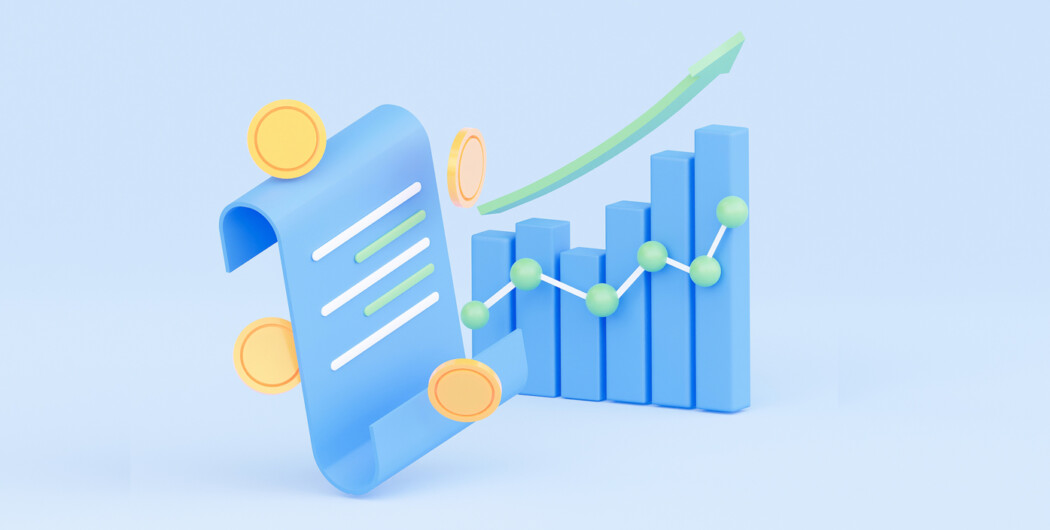

When gauging the health of an economy, experts take into consideration several critical macroeconomic and microeconomic factors. One of the most important metrics is aggregate demand (AD). So how do economists define aggregate demand, its meaning, and what role does it play in economics?
So, how do economists define aggregate demand? And what’s the role played by the AD in economics? Read on to find out.
What is aggregate demand?
In simple words, aggregate demand is defined as the total amount of demand for all finished goods and services in an economy over a given period. It encompasses all kinds of spending demands, including demand for consumer goods, government spending programs, imports, exports, and capital goods.
Understanding aggregate demand and related concepts
As a macroeconomic term that expresses the total demand for all goods and services at a given price level in a time, aggregate demand equals the gross domestic product (GDP) over the long term. The two metrics are typically equal because both of them are calculated in a similar fashion.
However, while the GDP represents the total value of goods and services produced in an economy, the aggregate demand expresses the demand or desire for those goods. As a result, the aggregate demand and GDP typically increase or decrease together.
Technically, aggregate demand levels with the GDP only in the long run after adjusting for the price level. The reason is that short-run aggregate demand measures the total output for a single nominal price level where nominal is not adjusted for inflation. Calculations can also vary depending on the methodologies and the various components used.
Aggregate demand includes all consumer goods, capital investments, exports, imports, as well as government spending programs. As long as they trade at a similar market value, all the variables are considered equal.
Drawbacks of aggregate demand
Even though aggregate demand is an important metric used to determine the strength of the economy, like all tools, it has its limits. Being measured by market values means it only represents the total output at a given price level. It does not necessarily represent the quality of life for the people in the economy.
Additionally, aggregate demand measures a number of different economic transactions made by millions of individuals, all for different purposes. Therefore, it can become challenging to work out the causality of demand and carry out a regression analysis to determine the number and strength of factors and variables that influence this demand.

Aggregate demand curve
Aggregate demand can be represented visually by the derivation of an aggregate demand curve. The aggregate amount of demand for goods and services is placed on the horizontal X-axis, while the vertical Y-axis is used to represent the overall price level of the entire basket of goods and services.
Like most demand curves, the AD curve slopes downward from left to right. Demand may rise or fall along the curve as the prices for goods and services increase or decrease. Shifts in the curve can occur due to fluctuations in the money supply or changes in tax rates.
Components of aggregate demand
By definition, aggregate demand is the sum of the demand curves for different sectors of the economy. Usually, these sectors are divided into four components:
- Net Exports
Net exports enumerate the demand for foreign goods and the foreign demand for locally produced goods. It is calculated by removing the gross value of a country’s exports from the gross value of all imports.
- Consumer Spending
The demand by individuals and households for final products and services within the economy is known as consumer spending. Several factors influence consumer demand, the most significant being consumer incomes and the rates of taxation.
- Investment Spending
It includes business/corporate spending and planned private investments in non-final capital goods, such as factories, machinery, etc.
- Government Spending
It is a demand produced by government programs. This component includes the demand for infrastructure spending and public goods, while it does not include programs such as social security or Medicare since these programs simply shift demand from one group to another.
Calculating aggregate demand
The aggregate demand is calculated with the help of a simple formula. The amount of consumer spending, government spending, and private investment spending is added to the net amount of exports.
Numerically, the aggregate demand function is expressed as:
AD = C + I + G + Nx
The components of aggregate demand in the equation are:
- C = consumer spending on final products
- I = business/corporate spending and private investment on non-final capital goods
- G = government spending on public services and goods
- Nx = net exports (exports minus imports)
The AD formula above is used by the U.S. Bureau of Economic Analysis to measure the country’s GDP.
Factors that influence aggregate demand
Many factors can affect AD in economics. Some important ones include interest rates, currency exchange rates, inflation expectation, and income & Wealth.
Interest rates
The rise or fall of interest rates affects financial decisions taken by consumers and businesses. A decrease in interest rates reduces the interest costs for purchasing major items such as homes, vehicles, and appliances. Companies also can borrow funds at lower rates, increasing capital spending. Vice versa, an increase in interest rates results in a higher cost of borrowing for consumers and businesses. It tends to decrease or slow down spending, depending on the magnitude of the change in interest rates.
Currency exchange rates
In the case that the value of the U.S. dollar falls, foreign goods become more expensive to import. Simultaneously, goods manufactured in the U.S. become cheaper for foreign markets to purchase. As a result, net exports decrease as the value of imports rises and the value of exports goes down. Aggregate demand, therefore, increases.
Inflation expectation
Consumers expecting inflation to increase prices rush to make purchases now, which leads to rising aggregate demand. But if consumers believe prices will fall in the near future, aggregate demand tends to fall simultaneously as well.
Income and Wealth
With increases in household wealth, there are typical increases in aggregate demand as well. On the other hand, a decrease in household wealth leads to lower aggregate demand. During times of economic uncertainty such as recession, consumers gravitate towards increasing personal savings, which leads to decreased spending and demand for goods. However, a strong economy will see people spending more on necessities and desired goods, meaning personal savings will decrease.
Economic conditions and aggregate demand
The aggregate demand can be impacted by economic conditions originating domestically or internationally. Sparked by the vast numbers of mortgage loan defaults, the financial crisis of 2007-08 and the ensuing Great Recession are excellent examples of a decline in AD due to economic conditions.
The crises severely impacted banks and other financial institutions, causing many of them to report widespread financial losses leading to a severe decrease in lending. Because of this, the country saw a decline in business, corporate, and industrial investments. According to the Federal Reserve Monetary Policy Report to Congress of 2011, there was a major drop in investments in commercial physical structures, such as factories, equipment, land, and software, throughout the years 2008 and 2009.
As businesses suffered from decreased access to capital and lower sales, they had no choice but to lay off workers to help cut costs. During the recession, there was a surge in unemployment. At the same time, GDP growth was also constrained in 2008 and 2009, meaning that the total production in the economy also dropped.
As a result of a poor-performing economy and increasing unemployment, there was a decline in consumer consumption or personal spending. Personal savings also spiked as consumers began to hold on to cash because of the instability and uncertain future of the banking system. By understanding the progression of events in 2008, we can see how there was a decrease in commercial and personal aggregate demand due to the economic conditions of the period.
H2 – Aggregate demand controversy
Even though the aggregate demand definitely went down in 2008 and 2009, there is much debate among leading economists about whether the aggregate demand slowed, leading to lower growth, or the GDP dropped, which led to a decreased aggregate demand. The argument about whether AD affects the GDP or the GDP concerns the AD is the economists’ equivalent of the age-old philosophical question of what existed first: the egg or the chicken.
Giving a boost to the aggregate demand also increased the size of the economy with regard to the measured GDP. However, this does not entirely mean that the increase in aggregate demand propels economic growth. It means that an increase in aggregate demand does not prove that demand is the sole cause of economic growth.
Since the calculation of the GDP and aggregate demand calculation share the same components, the formulas show that they increase simultaneously. However, the equation cannot show what metric is responsible for the effect on the other. For many years the relationship between economic growth and aggregate demand has therefore been an important subject of debate in economic theory.
Historical debate
It was hypothesized by early economic theories that production was the source of demand. An idea known as Say’s Law of Markets was introduced by the 18th-century French economist Jean-Baptiste Say and stated that the limiting factor for consumption was productive capacity because social demands are essentially limitless.
Say’s law was widely accepted by economists until the 1930s, when the British economist John Maynard Keynes introduced his theories. Keynes placed aggregate demand in the driver’s seat by arguing that demand fuelled supply. The idea that stimulating aggregate demand will increase real future output has seen been believed by Keynesian macroeconomists. It has become the basis of their demand-side theory, which states that the total amount of production in an economy is fueled by the demand for goods and services and propelled by the funds spent on them. In simpler words, rising levels of spending are seen by producers as an indication to boost production.
By stating that supply is perfectly elastic, Keynes also defined effective demand as a situation in which equilibrium output is determined solely by the level of aggregate demand.
Keynes considered unemployment a byproduct of inadequate aggregate demand since wages would not correct and decrease quickly enough to adjust for reduced spending. He had the belief that government spending could be used to increase aggregate demand until the unemployed, such as laborers, had jobs again.
Other schools of thought also exist, and many have picked their sides in the debate. Most notable are the Austrian School and real business cycle theorists, who side with Say. They believe that consumption is only possible after adequate production, which means that an increase in output is responsible for increasing consumption and not the other way around. Therefore, any attempt to artificially boost spending (rather than focusing on increasing sustainable production) would only cause unequal distribution of wealth or higher prices.
Being a demand-side economist, Keynes argued that individuals could damage production by constraining current expenditures (by hoarding funds, for example). On the other hand, other economists say hoarding might impact prices but would not necessarily affect capital accumulation, production, or future output. It is to say, the effect of an individual’s saving practices (more capital available for business) does not disappear due to a lack of spending.
What factors affect aggregate demand?
By using the average demand formula, we can identify several critical economic factors are responsible for influencing the aggregate demand:
- The rise or fall of interest rates will affect decisions made by consumers and businesses.
- Increasing household wealth causes aggregate demand to rise, while a decline usually lowers aggregate demand.
- Consumer confidence in the economy and the expected rates of future inflation also positively correlate with aggregate demand.
- Finally, a decrease in the exchange value of the domestic currency will make foreign goods more expensive (in terms of imports). In contrast, goods manufactured locally will become cheaper (relative to the value of exports), which means an increase in aggregate demand.
What are some limitations of aggregate demand?
While aggregate demand is a helpful metric in working out the buying strength of consumers and businesses in an economy, it has a set of limitations.
Since AD is determined using market values, it can only represent the total output at a given price level. Therefore, it does not necessarily represent the standard or quality of life.
Another thing to keep in mind is that aggregate demand measures a variety of economic transactions made for different purposes between millions of individuals. This causes it to become challenging when trying to figure out the causes of demand.
What’s the relationship between GDP and aggregate demand?
The GDP enumerates the size of an economy based on the monetary value of all finished goods and services produced within a country during a specified timeframe. The GDP can thus also be called the aggregate supply.
AD measures the total demand for all these goods and services at a given price level during the specified period. Therefore, it eventually becomes equal to the gross domestic product because the two metrics are calculated similarly, meaning that the aggregate demand and GDP fluctuate equally.
The Bottom line
Aggregate demand is a metric of macroeconomics that enumerates the total demand for all types of goods and services at a certain price point. In the long run, it is typically similar to the GDP. When used along with other metrics, AD is an important tool for economists. However, it has some drawbacks and is still the subject of debate in the economics community.








